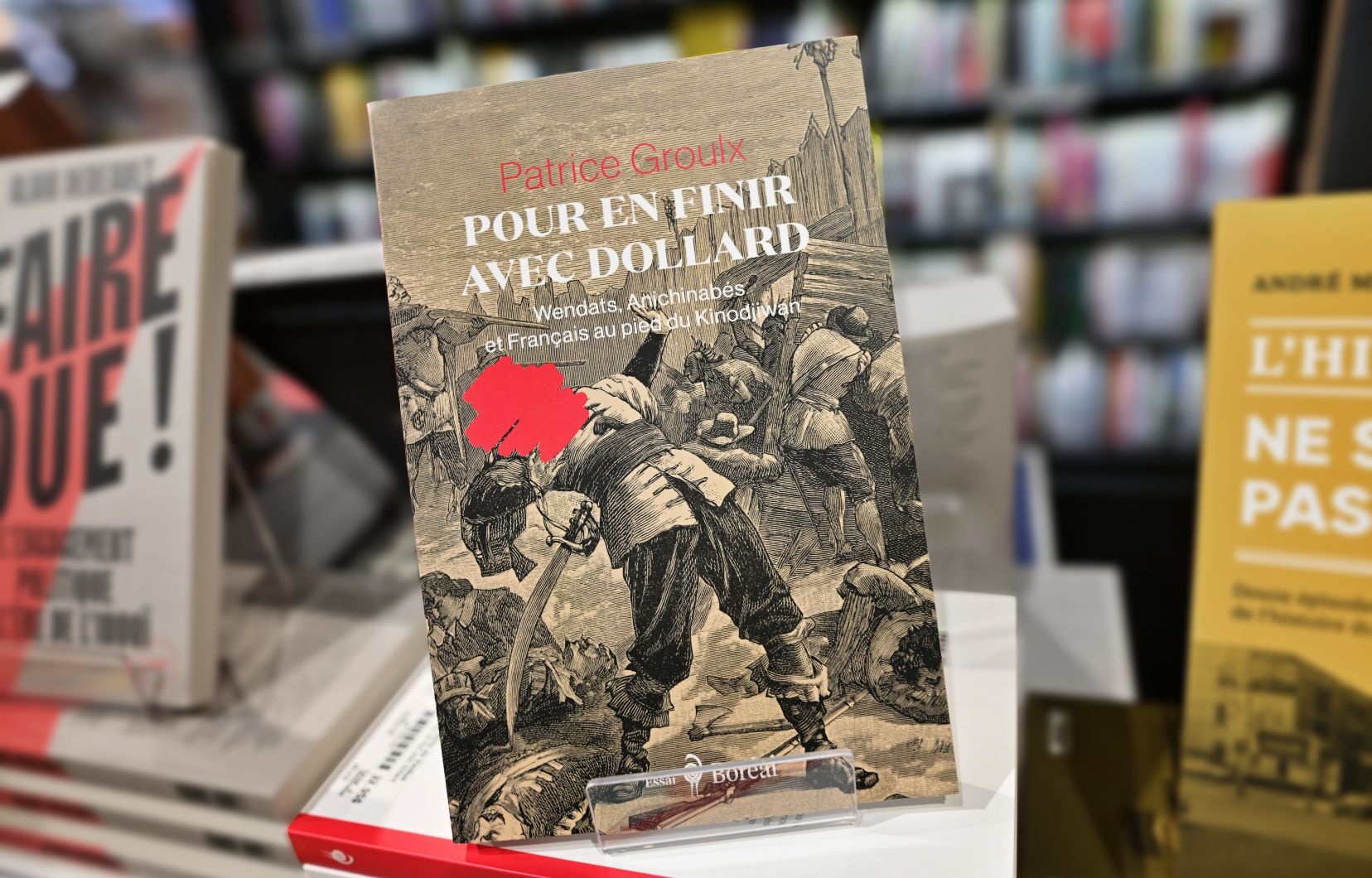In a previous work (Memory traps. Dollard des Ormeaux, Native Americans and us1998), Patrice Groulx set up the scaffolding on which his new book on Dollard is built (To put an end to Dollard. Wendats, Anishinabe and French at the foot of KinodjiwanBoréal, 2024). Demonstrating great mastery of his subject, in clear language, the author extends the scope of his investigation and deepens his analyses. It also updates to take into account the numerous works published since 1998.
The book weaves several threads, but the main plot is clear: showing the reversals which can affect the meaning given to a past event and even the nature of the event.
The first reports reaching Ville-Marie generated relatively little attention, even less passion. Even in the texts of François-Xavier Garneau during the 1850s, Dollard and Long-Sault remained in the background. After the failure of the patriots and the emergence of the Church as a socio-cultural power, French Canada entered another history, hence the need for references, myths, symbolic foundations. With his 1865 manual, Étienne-Michel Faillon developed a lyrical memory consistent with the new vocation of the young nation, a nation henceforth dedicated to Catholicism, chosen by God, called to spread its faith in America. Dollard and his exploit thus found themselves center stage.
Making a selection among the events and the characters, falsifying the facts if necessary, Faillon established the paradigm at the origin of numerous hagiographic versions of which Patrice Groulx takes inventory, taking care to identify their specificity – around thirty Derivative stories are recorded between 1865 and 1910, and many others were to follow. Groulx, however, notes a common pattern which structures these stories in a Manichean mode, misleading and impoverishing, as always: Christians against pagans, civilized against barbarians, culture against nature, and others.
It also shows how the authors plunder their predecessors, thus constructing “a bastardized and repetitive tradition” (p. 99). Everyone abuses hyperboles to ennoble the “savior of New France”. In F. Parkman, for example, Dollard is said to be of the same caliber as the knights of the first crusades. An iconoclastic text certainly appeared in 1887 from the pen of W. Kingsford, and another in 1900 signed by a brother from the Mont-Saint-Louis college. But those are the only false notes.
The year 1910 marks the end of the founding era. Another generation will take over and give new impetus to the mythification of Dollard. Lionel Groulx then established himself as a dominant figure. The sacrificed hero, martyr of 1660, embodies the highest moral ideal (Groulx: “this bloody dew is needed at the germ of every great future”, p. 127). The canonical story, amplified, has immense influence within society (schools, media, nationalist circles, political circles, youth associations, etc.).
But the Homeric flights of Groulx and his followers end up harming the cause. From the 1930s, for various reasons, the decline began and accelerated. Even a very nationalist newspaper like Duty is gradually losing interest in large commemoration companies.
A new trend is emerging in the intellectual community which is campaigning for a new, more sober, fairer look at what happened. Historical research is becoming more rigorous, more faithful to the archives, more concerned with the reconstruction of facts. A new representation of Dollard and his actions is broadcast. Lyricism is losing ground, opinion is distancing itself from it. Soon there will be open protest and even mockery.
In chapter 5 (entitled “End of cycle”), the author describes well the events of what he calls “the symbolic exhaustion of the legend” (p. 156 et seq.). The new face of the Native allows us to rectify his role in the 1660 episode. Even the location of the confrontation raises doubts. The mythology supporting the canonical narrative dissolves. Many suggest refocusing attention on the patriots, who embody freedom and democracy while Dollard symbolizes colonial values.
How can we explain this turnaround? Several factors are involved. Patrice Groulx skillfully endeavors to illuminate them. It is essentially the shaking of the cultural foundations of French Canada under the effect of the new world that is taking place (more materialist civilization, renewal of national values, secularization, urbanization, etc.). Under the influence of pluralism and awareness of rights, the history of relations between Francophones and Indigenous people is also transforming. We are now working to reconstruct the vision of our origins.
The book, and this is not its least merit, provides rich material for reflection on the evolution of memory. Using numerous examples (starting with the course of combat), he shows how events are malleable and their meaning multiple and changing. That said, collective memory will never be definitively written. It is inevitable and normal that it changes. Historical science is largely inspired by concerns and questions linked to current events. However, a society is always in motion, which requires a constant renewal of questions and directions of inquiry.
Memory also changes because the past usually lends itself to insights, to different and even divergent interpretations which arise from the diversity of ideas and convictions. What is important is that historical research submits to strict rules which serve as guarantor and arbiter.
Due to lack of space, it is impossible for me to address many other questions dealt with in the work: the different faces given to Dollard, the exploitation of his character in English Canada in the service of imperialism, the role of the Church in the success of canonical interpretation, the modes of falsification of facts, the complex functions of commemoration, the conflict of memories, the process of rehabilitation of the Indigenous, the conditions of reconciliation, the future monuments that bear witness to the traditional story…
